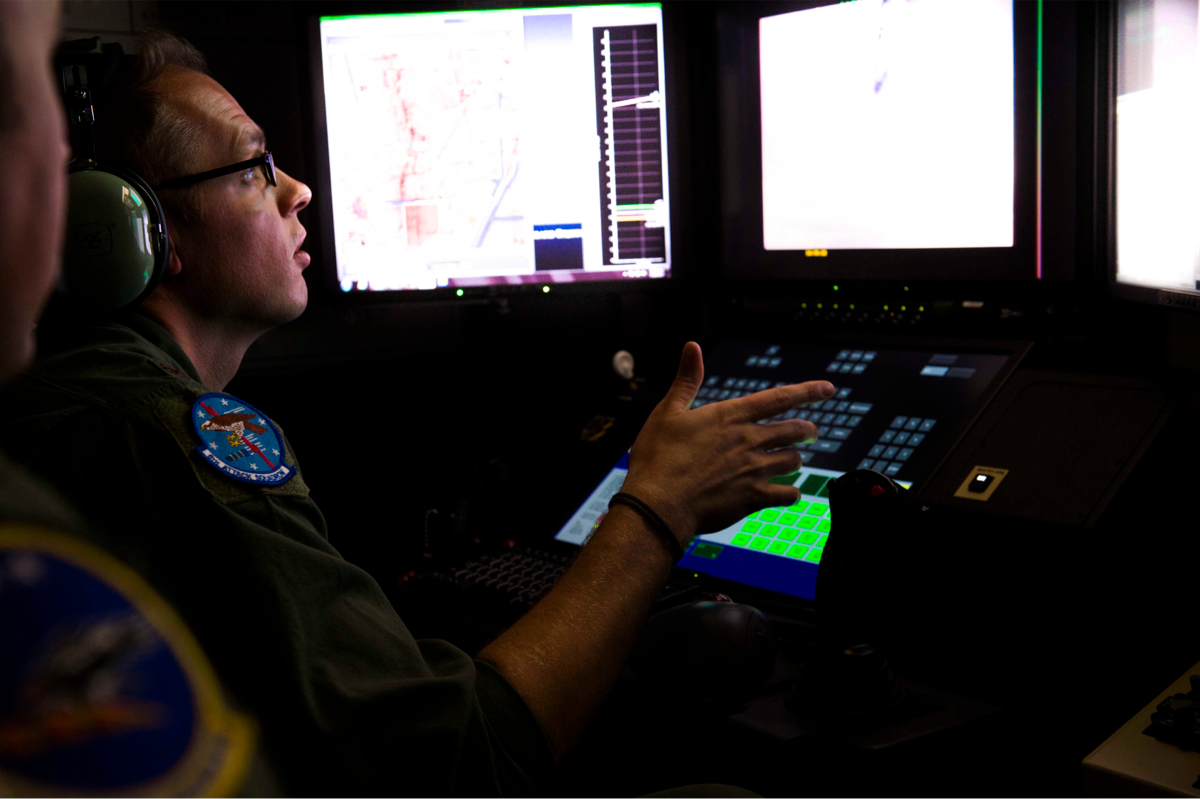Shrouded in secrecy, the Pentagon’s Joint Artificial Intelligence Center has been billed as a clearing house for organizing the Department of Defense’s thinking and projects related to AI.
While the Crystal City-based organization is still relatively new, it is acknowledging work on a few of DoD’s national initiatives — pressing operational or business reform challenges identified either from the National Defense Strategy’s key operational problems or by a specific military leader.
These active national mission initiatives include predictive maintenance, humanitarian aid and disaster relief, cyberspace and robotic process automation, Jill Crisman, chief scientist and acting chief technical officer at JAIC, said during a May 16 presentation at the TechNet Cyber conference in Baltimore, Maryland.
RELATED

Regarding predictive maintenance, a slide provided during Crisman’s presentation noted that suboptimal maintenance severely degrades readiness. Specific tasks JAIC will be looking at under this pillar include understanding, predicting and mitigating key mechanical issues, increasing availability of combat systems and reducing operating cost.
Crisman said this can apply to almost all platforms in DoD.
Disaster response efforts will seek to use data models to better combat events and improve rescue efforts during events.
“If you remember the wildfires in California, they were moving so quickly that it would have been really nice to know which directions they were moving so that you can actually enable fire fighters to better go after those flames,” she said. “Right now, when they look at planning, how they’re going to deploy their fire fighters, the data they’re looking at for where the fires actually are are at least 24 hours old. We want to provide real-time fire mapping so people can see in real time where’s the actual fire to better respond.”
In terms of cyberspace, Crisman’s slide said that “static, rule-based cyberspace tools are not designed for military cyber operations.” She noted during her presentation that JAIC wants to help DoD understand attacks that are happening on systems and networks and facilitate collaboration across the department.
Specific efforts include detect advanced cyberthreats in real time, identify adversarial use of compromised accounts, identify novel threat activity and generate network maps to increase situational awareness.
Other cyber-related activity JAIC will focus on, not necessarily related to this specific national mission initiative, includes looking at cloud strategies and greater software adoption.
Crisman said JAIC will be looking at cloud strategies for deployment, because much of DoD’s computing is going to be at the edge. Additionally, Crisman said that for DoD and JAIC to adopt AI they first have to adopt software. Software adoption is “something the DoD really hasn’t figured,” she said, adding it’s part of JAIC’s mission.
Lastly, regarding robotic process automation, Crisman said this isn’t totally AI, but is mostly focused on automating back-end tasks to free up people to do more complicated tasks.
“DoD has innumerable manual processes, which could be improved with automation,” her slide read. To tackle this issue, JAIC will look to automate manual and repetitive tasks, automate data searching, entry and fusion to increase workforce productivity and achieve certification to run user created software on DoD systems.
Looking beyond national mission initiatives, JAIC will also tackle projects that address component mission initiatives. While less is known about these, they are component-level challenges, as opposed to larger national and strategic issues, that can be solved through AI.
Mark Pomerleau is a reporter for C4ISRNET, covering information warfare and cyberspace.








